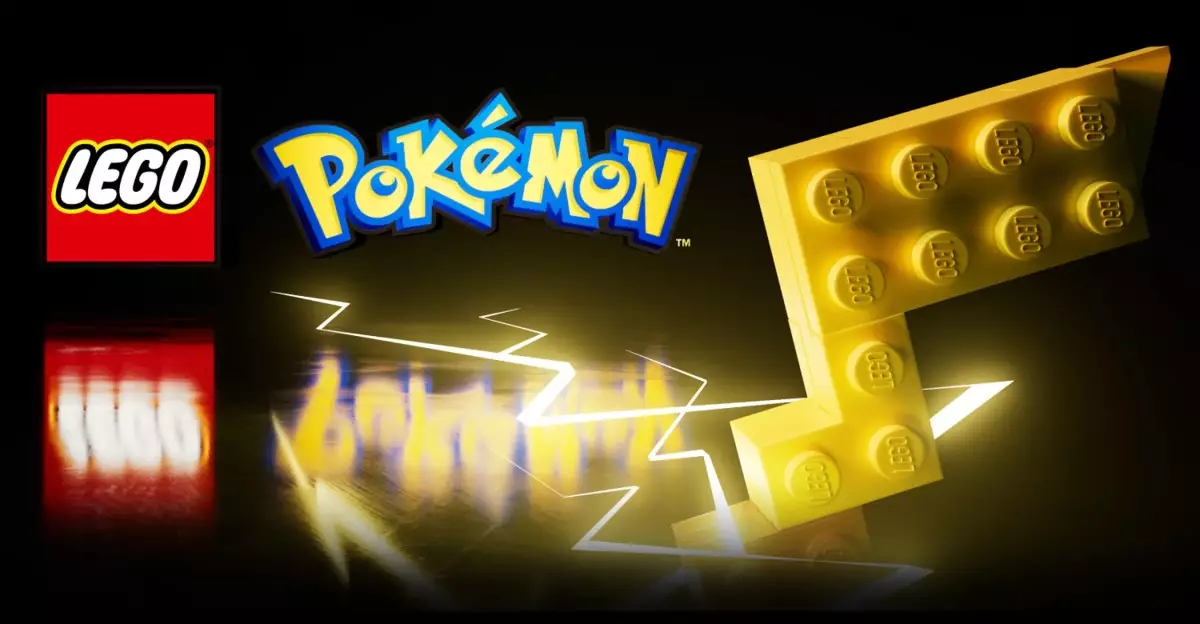Lovers of both Lego construction and Pokémon have reason to get excited, even if the wait may feel interminable. The famed toy company Lego has confirmed that it will be releasing sets based on the beloved Pokémon franchise, although fans will have to hold their excitement until sometime in 2026. This announcement has ignited a flurry of speculation within the fanbase about which characters will ultimately make the cut, especially given the vast array of iconic creatures the Pokémon universe has to offer.
When Lego’s teaser hints at upcoming sets, it lightly displays a recognizable feature: Pikachu’s tail, crafted from vibrant yellow bricks. This subtle preview has sparked curiosity, ensuring that anticipation will only grow as fans await more announcements. However, such a prolonged wait raises the question of whether the hype could diminish over time or if it will remain steadfast among die-hard fans.
The Competitive Landscape of Pokémon Building Sets
While Lego prepares to enter the Pokémon frenzy, it’s noteworthy to mention that the market already features Pokémon-themed sets produced by Mattel, through their Mega Bloks line — toys that are effectively compatible with Lego bricks. It prompts a critical inquiry: will Lego stake a claim as the sole manufacturer of official Pokémon building sets? If both companies continue to produce their respective Pokémon lines, the competition could significantly influence which characters and themes will garner fan interest the most.
Moreover, the integration of two massively popular franchises brings its own set of challenges. The strategic branding of Lego has traditionally hinged on the creativity of building and storytelling, while Pokémon thrives on adventure and collection. The synthesis of these two worlds could potentially lead to innovative and immersive sets, but it will require delicate balancing to ensure fans of both sides are satisfied.
Game Boy Introductions and Nostalgic Opportunities
Adding yet another layer of excitement, Lego has already teased a buildable version of the Game Boy, the handheld console that served as the launchpad for Pokémon video games in 1996. The connection between this nostalgic gadget and the anticipated Pokémon sets is undeniable; it exemplifies how emotions are intrinsically tied to both toys and games we grew up with. However, with little information available about the Game Boy set, one can’t help but wonder if it will live up to the high expectations set by its iconic predecessor.
By timing the release of Pokémon sets with a nostalgia-driven product like the Game Boy, Lego may have discovered a clever marketing angle. The concept of revisiting one’s childhood through the medium of building bricks could resonate strongly with millennials and Gen Z consumers alike, compelling them to explore not just physical constructs but also emotional connections behind these beloved brands.
Speculation and Fan Engagement
As the countdown to 2026 begins, fan engagement takes center stage. Lego might consider interactive ways to maintain interest, such as polls for character selection or sneak previews of the development process. Allowing input from its consumers could create a sense of community and promotional buzz that only enhances the anticipation for these products. Wielding nostalgia effectively while building excitement can set the stage for what could be a remarkable chapter in both the Lego and Pokémon legacies.
Ultimately, while the wait may seem daunting, the potential for creativity and collaborative storytelling between these two celebrated genres is immense.

